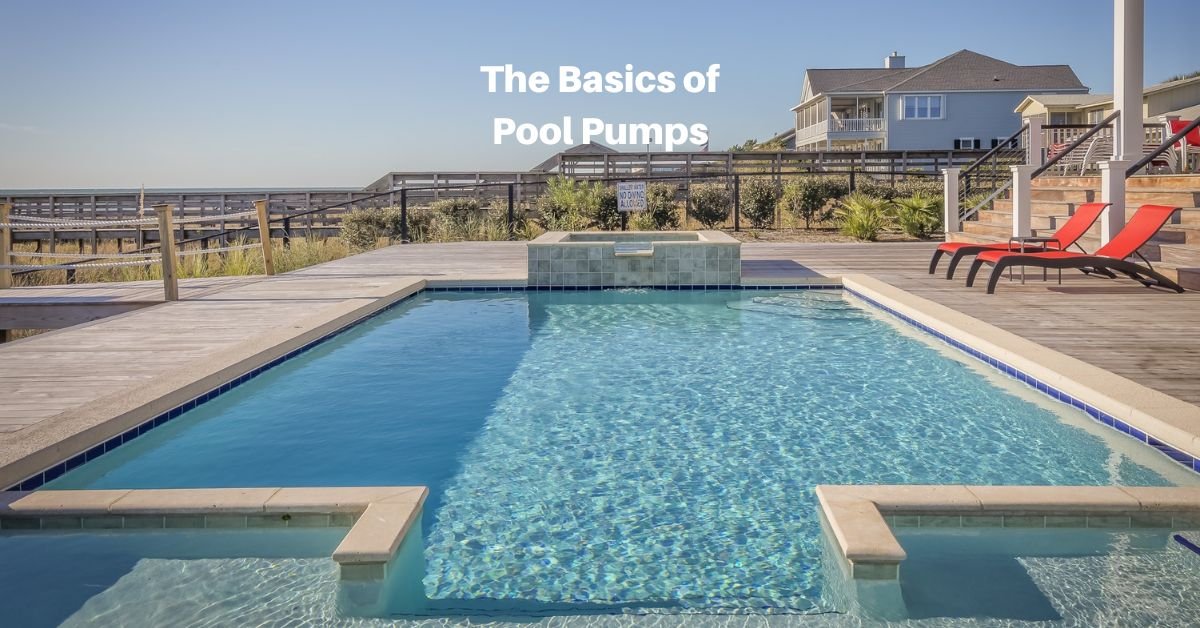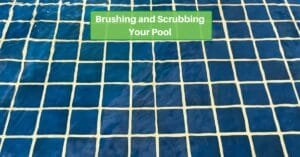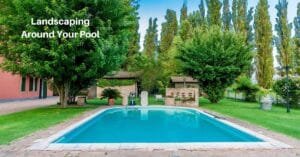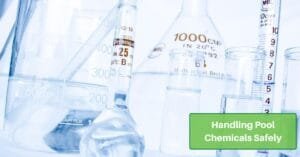Behind every great and relaxing swimming pool, there is a whole set of equipment to keep it in great shape, and a high-quality pool pump is at the heart of that equipment. Understanding their importance is the key to keeping everything running smoothly.
Here, we’ll describe what pumps do and the different types you’ll encounter when shopping for one. We’ll also touch on some aspects of pump maintenance. So, let’s get started and paddle through all you need to know!
Importance of Circulation and Filtration
Proper circulation is the backbone of a healthy pool. It ensures that all areas of the pool receive adequate water flow. This flow prevents stagnation and promotes the even distribution of chemicals. Effective filtration – which circulation allows – removes impurities, keeping the water clear and safe for swimming.
Basics of Swimming Pool Pumps
Functionality and Purpose
A swimming pool pump circulates water through the pool’s filtration system. This process allows the filter to remove debris and contaminants and prevent algae growth in the pool. The pump draws water in, passes it through the filter, and returns it to the pool.
Components of a Pool Pump
A typical pump comprises a motor, impeller, housing, and strainer basket. The motor powers the impeller, creating the necessary suction for water circulation.
Types of Swimming Pool Pumps
Swimming pool pumps come in three speeds. The speed options of a pump affect its efficiency, which also impacts the cost of operating it.
Single-Speed Pumps
The traditional single-speed pump operates at a fixed speed, providing a consistent water flow. The purchase price is usually lower than other models, but these pumps are less energy-efficient and can be noisy.
Dual-Speed Pumps
Dual-speed pumps can operate at a low speed for standard filtration, or high speed for tasks like vacuuming or after you add chemicals. They allow users to switch between two preset speeds, providing a balance between energy efficiency and performance.
Variable-Speed Pumps
Variable-speed pumps offer even more flexibility. They allow users to adjust the speed according to their needs. Instead of just two speeds, you have more settings to choose from.
These finer adjustments result in significant energy savings, making them a more environmentally friendly and cost-effective option over time.
What to Consider When Choosing Your Pool Pump
Besides the speed options, you’ll want to consider several other factors when choosing a pool pump.
Pool Size and Capacity
The size of your pool is one of the most essential factors in determining the right pump. Larger pools require more powerful pumps to ensure adequate circulation.
Flow Rate and Turnover Rate
Understanding the flow and turnover rates helps determine how quickly the pump can circulate the entire volume of water in the pool. A higher turnover rate is generally beneficial for maintaining water quality.
Energy Efficiency and Cost Considerations
While single-speed pumps may be cheaper upfront, variable-speed pumps offer long-term savings through energy efficiency. Consider the overall cost of ownership, including maintenance and energy consumption.
Noise Levels
The noise generated by a pump can impact your poolside experience. Variable-speed pumps, operating at lower speeds, are generally quieter than their single-speed counterparts.
Compatibility with Pool Filters and Other Equipment
Ensure your chosen pump is compatible with your pool’s filtration system and other equipment. A seamless integration ensures optimal performance.
Common Challenges and Solutions
Inground pools may face challenges like water stratification and dead spots. Strategic pump placement and proper sizing can mitigate these issues, ensuring uniform water distribution.
Above-ground pools also have their problems to confront. Pump selection should consider factors such as pool size, elevation, and exposure to inclement weather. Consider a temporary shelter to protect the unit.
Pump Size and Horsepower Recommendations
Matching the pump to the pool’s size and depth is essential for efficient water circulation. Pools often have specific guidelines for pump selection provided by manufacturers. Follow these to ensure that every part of the pool’s water circulates adequately.
Installation Tips and Best Practices
Proper installation, including correct plumbing and priming, is crucial for pool pumps. Following manufacturer guidelines ensures optimal performance and longevity.
Maintenance, Inspection, and Cleaning
Routine inspection of the pump, strainer basket, and impeller is essential to identify and address potential issues. Cleaning these components ensures efficient operation.
Recognizing Common Issues
Be on the lookout for common pump issues, such as air leaks, priming problems, or unusual noises, so that you can promptly troubleshoot and resolve issues.
Seasonal Shutdown and Startup Procedures
Properly winterizing your pool pump during colder months and restarting it in the spring prevents damage and extends the pump’s lifespan.
Emerging Technologies in Pool Pumps
Like every other aspect of society, pool pumps are evolving and improving as they incorporate modern technology. Here are a couple of examples of what’s already on the market:
Smart Pool Pump Systems
Advancements in technology have introduced smart pool pumps with remote monitoring and control. Users can adjust settings and monitor performance through mobile apps.
Remote Monitoring and Control
Remote access to pump controls provides convenience and allows users to optimize pump performance based on changing circumstances.
Eco-Friendly Innovations
Manufacturers are introducing eco-friendly features, such as variable-speed options and energy-efficient designs, contributing to a greener approach to pool maintenance.
In short, pay attention to the importance of selecting the right swimming pool pump. Whether you have an in-ground or above-ground pool, understanding the fundamentals will contribute to your pool’s long-term health and enjoyment. When needed, Seeking professional advice ensures a tailored approach to your pool requirements.









